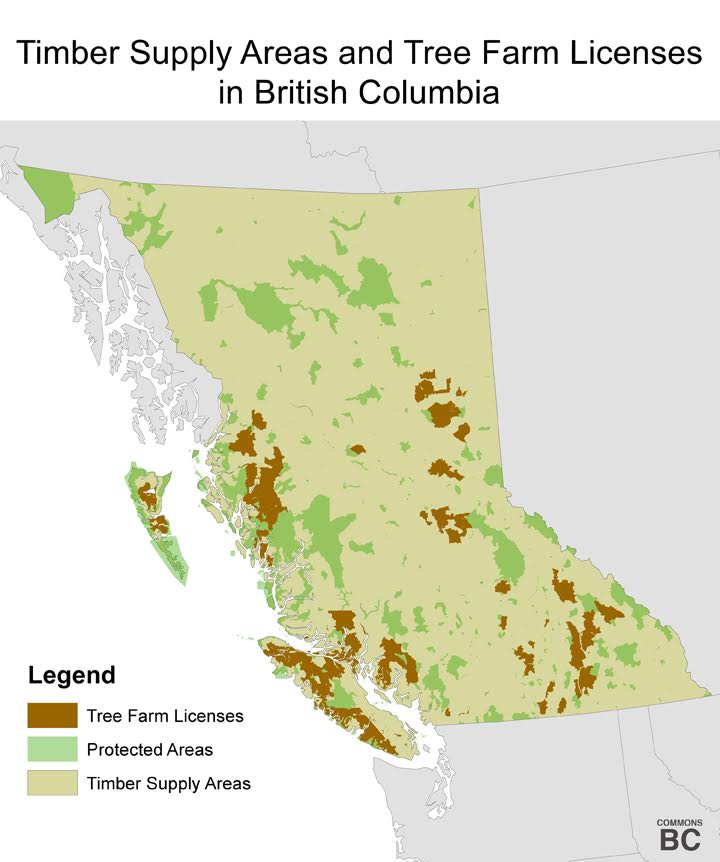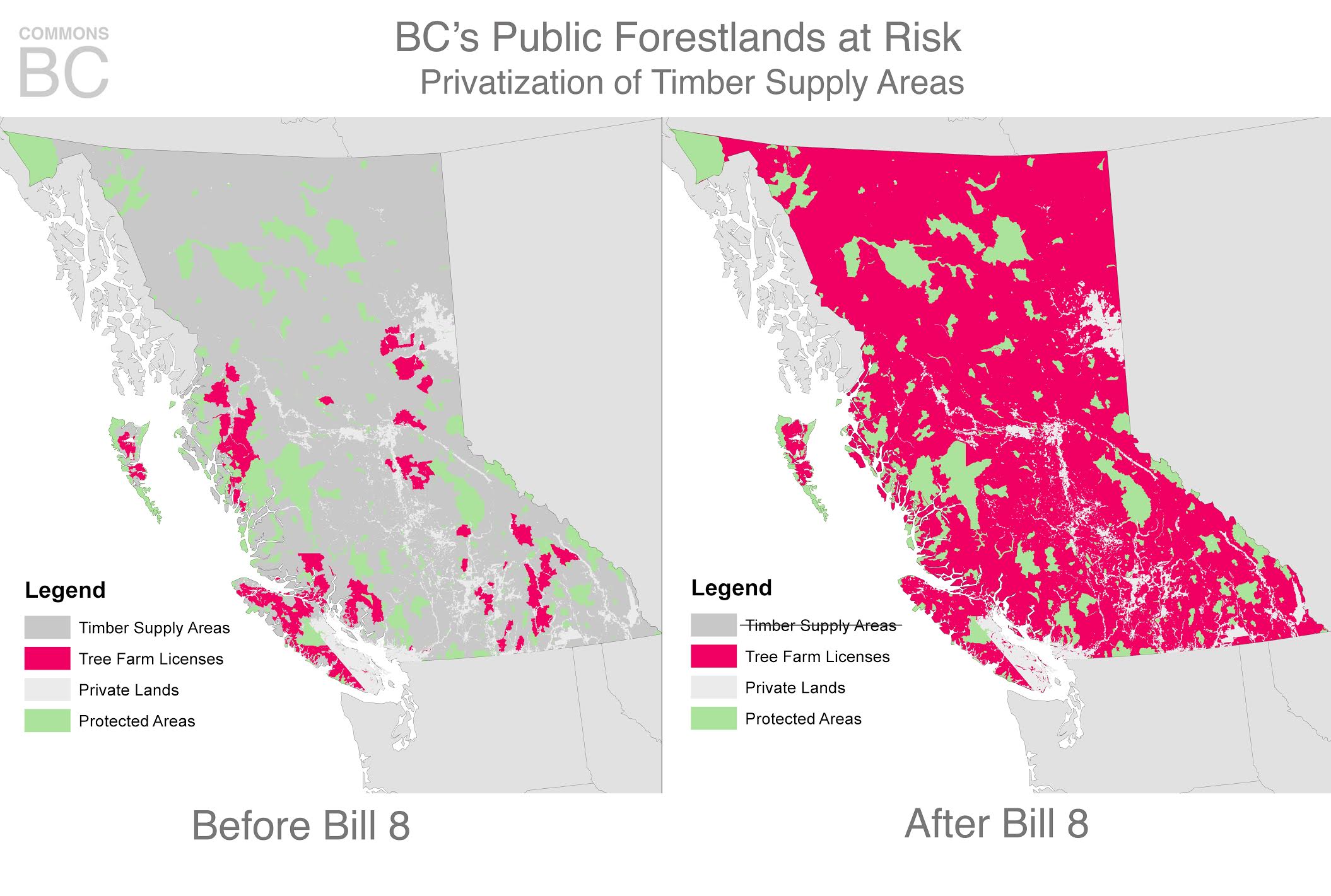
 You don’t need to know the technical terms TSA (Timber Supply Area) and TFL (Tree Farm License). All you need to know is that privatization would involve turning all the yellowish areas brown. Or from grey to pink, in the second map. See also this.
You don’t need to know the technical terms TSA (Timber Supply Area) and TFL (Tree Farm License). All you need to know is that privatization would involve turning all the yellowish areas brown. Or from grey to pink, in the second map. See also this.
To get into a bit more detail, the yellowish areas are BC public or “Crown” lands which are administered by the Forest Ministry as Timber Supply Areas (TSA). When an area of BC’s public forestlands is handed over to a timber company for logging as an “area-based tenure” or Tree Farm Licence (TFL), that confers private rights to the company, rights that are renewed virtually in perpetuity. TFLs can be treated as that timber company’s private asset: sold, transferred, borrowed upon. And if those forest lands are needed for land claims settlement, or for community or First Nations forest licences, or to be protected for values other than timber, then large compensation settlements would have to be paid to get those public forest lands back. The brown areas on the map are current TFLs operated by corporations in BC.
Right now the government is putting forward a “Bill 8” which, if passed, has the potential to convert or “roll over” all the TSA (yellow) into TFLs (brown) in what would be by far the largest privatization of forest land rights in BC history.
Maps are useful because they can give a sense of the magnitude of some of these decisions.
NOTE: when we refer to “public” or “Crown” lands, it is important to understand that the Supreme Court of Canada has ruled that First Nations Title co-exists with Crown Title.
DETAILED EXPLANATION OF HOW THIS PRIVATIZATION WOULD WORK:
Section 24 and six other minor related sections of Bill 8 enable a minister to invite corporations to rollover forest licences at whim. Only 5 corporations will realistically be able to do this. Once the first one happens there will be a “gold rush” because the each corporation is faced with lower Allowable Annual Cuts (AAC) in the timber supply areas because of the huge hit to the standing inventory of pine by the mountain pine beetle. This means the ministers, who apportions the cut to the licences, will have to reduce the amount of timber available to each licencee. The problem has been magnified/exacerbated by government uplifting/increasing AACs to log beetle-killed pine. So if a licencee can rollover his licences into a TFL and maintain an AAC equal to or marginally less than at present then he is passing on the the inevitable falldown in AAC onto his competitors. Hence the “gold rush” effect. Another issue is that for a licencee to maintain its AAC in a TFL the TFL would have to be way larger than if the forests were healthy because so much of the landscape has been denuded of trees by the beetle and salvage logging.
Does the explain the snowball implications of Bill 8? If you let one corporation rollover in one area, why not let it do the same elsewhere and let others do likewise. But someone is going to be left holding the falldown ball.
